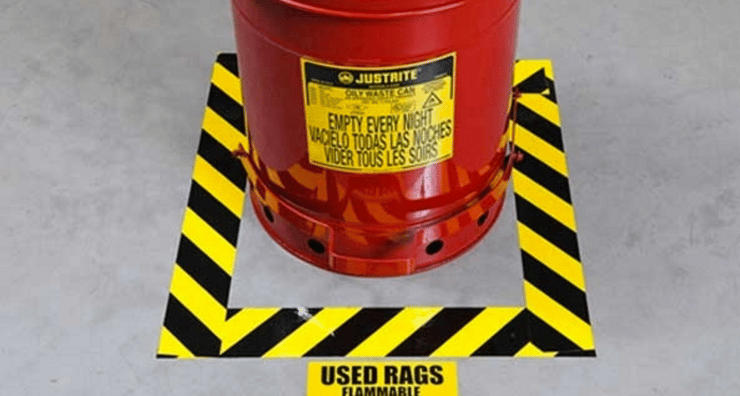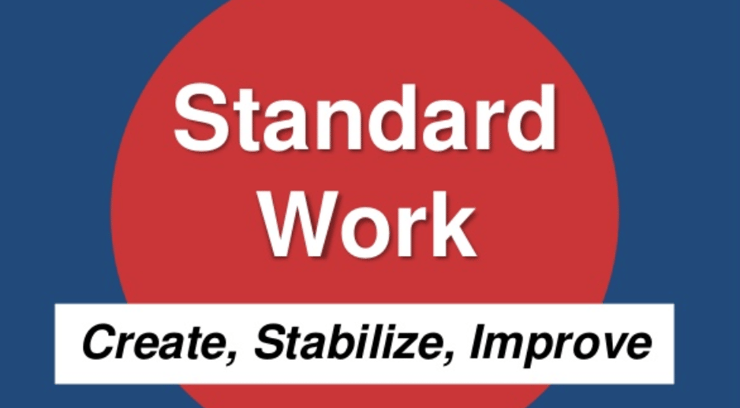










































QUESTION: One of the most basic practices of lean is a culture of 5S at each work station. Though we have spent time to set up each work station using the 5S approach, we seem to fall short on the "Sustain" element. We use audits to seek compliance and still struggle with this fundamental task. So my question is: How do you change a culture to sustain 5S in the workplace?

ANSWER: Unfortunately, this reader describes the typical outcome of a 5S event -- sad but true based on my experience. For every successful, culture of sustained 5S process I've seen, there have been scores more that turned out exactly like the one described here. The reader identifies the culture as the culprit. I'd suggest that culture is the symptom. Poor leadership is the root cause. Here's why.
It's relatively easy to make a 5S audit checklist of each value stream, work cell, machine or office in any operation. Conducting the audits is easy. What's not easy is having the high expectations and discipline by the leadership to set the proper stage with communications, standard work, assignment of specific responsibilities, relentless follow through and strict accountability.
Absent the execution of these things by each leader every day, 5S will never be sustained. Let's take these leadership requirements one at a time.
Start by explaining why 5S is such an important part of the continuous improvement (CI) journey. The usual perception by the hourly folks is that it's "just a housekeeping program" and isn't that important because they regularly see supervisors and managers walk by obvious violations to the standard without taking any action. The hourly person is thinking: "Hey, if they don't care, then I sure don't care!" Game over.
5S should instead be the beginning of the culture change necessary to transform the operation. Why? Because 5S requires the involvement of everyone in the shop. 5S is about creating the discipline, standard work, accountability and teamwork necessary to sustain. It's the same discipline, standard work, accountability and teamwork it will take on everything else on the CI journey to transform the plant and then sustain world-class performance. I always use this example: "If we aren't good enough to always put the broom back where it goes, then how will we ever be capable of meeting our customers' Critical To Quality (CTQs) requirements to a Six Sigma level?"
Get the full Lean 5S Guide Now

Engage the hourly workers in a tour of the work area. The purpose of this approach is to: collect important input directly from those being asked to do the work; explain the "why"/educate the need if there are other items that should be added; together, develop what items should be on the audit checklists; commit the audit to standard work; train all involved; ask them to participate on a rotating basis in the official weekly audits.
Supervisors should communicate their expectations and their roles to support and sustain based on their expectations. It should be clear that the supervisor will hold each person accountable to the standards to which all have agreed.
Most importantly, the supervisor pledges to never walk past a violation and is always available to assist if there is an issue. Leader standard work must be developed and adhered to everyday, forever. It's a critical element of any CI journey.
READ MORE: Lean Manufacturing Resources
This is the second most common mistake I see. Determining assignments is often done without much thought, i.e. arbitrary, and sometimes is simply left up to the hourlies to "just figure it out."
The best practice I like for this is to post a print of the layout in the work area. Engage the hourly associates to discuss and decide how to divvy up the responsibilities based on the value stream map (VSM) and the line balance. (Don't miss this great opportunity to educate the workforce how to understand and use this powerful VSM tool.) It will identify who has more time than others to do indirect duties so the work distribution is equitable. As importantly, it will help each person understand why they have more or less to do than their other team members.
Then color code/number the work area by zone and assign each person a specific zone for which they are accountable for always keeping in conformance to audit requirements. Be sure to take "before 5S" and "after 5S" pictures and prominently display them by zone. The "after" pictures are the new visual standard to be sustained. Always sustain throughout the shift where the line balance indicates. No more end-of-shift rush to clean up.
Even in excellent operations, sometimes "stuff happens." For example, if there's a line balance issue for whatever reason, there may be a temporary need for members of the team to flex and assist on 5S duties. This should be encouraged to help rebalance the load and keep the whole work area to standard without negatively affecting throughput at the constraint. Expect this kind of initiative and team spirit, and you'll get it.
Looking for further reading?
This is the straw that always breaks the camel's back. Hourly people don't hold themselves accountable because the supervisor doesn't set the right example. This is why so few 5S launches are sustained long-term. In fact, most are essentially DOA the first year.
The hard truth, is that 5S violations must be managed just like any other violation of company policies and procedures. There should be a progressive discipline system that is well-defined and in place.
The first such system to be designed is for the area supervisor. If the proper support, attention to detail, real-time responses to violations to standard are not being routinely done, then any discipline starts right there. Once the supervisor is held accountable for doing the supervisor's job, then it's ok to begin discussing discipline with any hourly people who are in violation. The supervisor must reflect the behavior changes being sought from the hourlies before imposing sanctions on others.
Ideally, the supervisor is so visible and so consistent on the expectations that occasional reminders and coaching are all that will be required to sustain. On the other hand, progressive discipline is an important part for those who don't want to do what is expected. Following standard work is a condition of employment. Absent progressive discipline and corrective action, we undermine our best people. If that occurs the supervisor will lose all credibility on 5S and everything else. Again, game over.
As always, leaders get what they expect. That includes what they expect and commit to for themselves.
"It is not only what we do, but also what we do not do, for which we are accountable." --Moliere, French Playwright
Learn more about Larry's work in Lean Leadership & Manufacturing, or leave your thoughts in the comments!
This post was originally published by Larry Fast on IndustryWeek.com
View our schedule of industry leading free to attend virtual conferences. Each a premier gathering of industry thought leaders and experts sharing key solutions to current challenges.
View Schedule of Events-------------------------------------------------------
Search for anything
Insights from the most progressive thought leaders delivered to your inbox.
Insights from the world's foremost thought leaders delivered to your inbox.
Being a hero is all about creating value for others. Please invite up to 5 people in your network to attend this premier virtual conference, and they will receive an invitation to attend.
If it’s easier for you, please enter your email address below, and click the button, and we will send you the invitation email that you can forward to relevant people in your network.
View our schedule of industry leading free to attend virtual conferences. Each a premier gathering of industry thought leaders and experts sharing key solutions to current challenges.
View Schedule of EventsWatch On-Demand Recording - Access all sessions from progressive thought leaders free of charge from our industry leading virtual conferences.
Watch On-Demand Recordings For FreeDelivered by the industry's most progressive thought leaders from the world's top brands. Start learning today!
View All Courses NowThe premier Business Transformation & Operational Excellence Conference. Watch sessions on-demand for free. Use code: BFH1120
Watch On-DemandInsights from the most progressive thought leaders delivered to your inbox.
Insights from the world's foremost thought leaders delivered to your inbox.
Being a hero is all about creating value for others. Please invite up to 5 people in your network to also access our newsletter. They will receive an invitation and an option to subscribe.
If it’s easier for you, please enter your email address below, and click the button, and we will send you the invitation email that you can forward to relevant people in your network.
Courtesy of Nintex Pty's Paul Hsu, below is a transcript of his speaking session on 'Improve employee productivity during and post-COVID by ...
Read this article about HP, Best Achievement in Operational Excellence to deliver Digital Transformation, selected by the independent judging panel, ...
Read this article about BMO Financial Group, one of our finalists, in the category Best Achievement in Operational Excellence to deliver Digital ...
Read this article about Cisco, one of our finalists, in the category Best Achievement of Operational Excellence in Internet, Education, Media & ...









































































































































































































